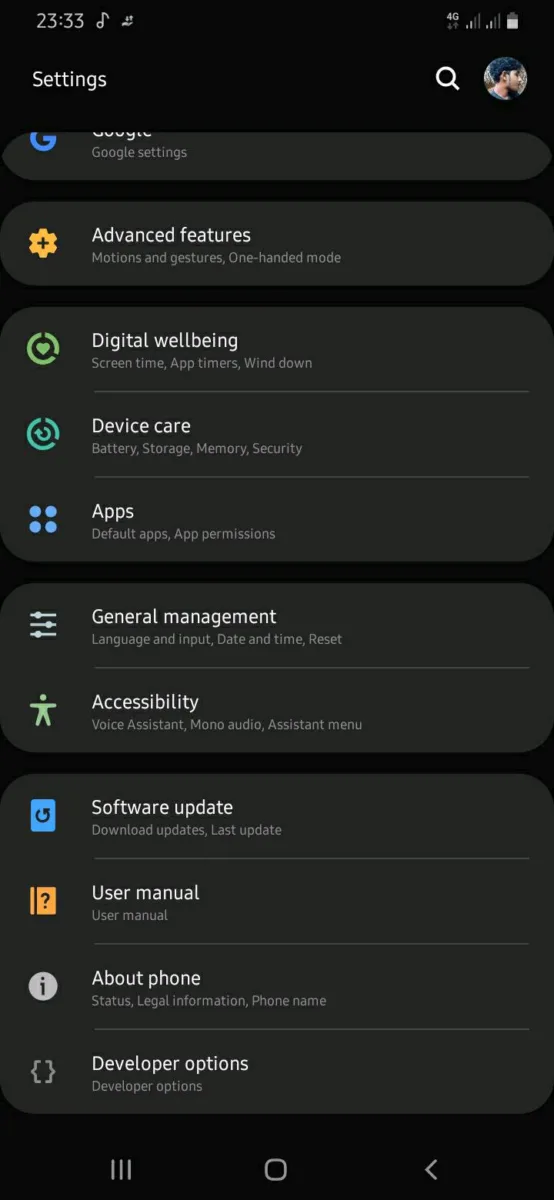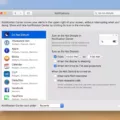Advanced settings on Android devices allow users to customize and fine-tune various aspects of their device’s functionality. Whether you’re a tech enthusiast or just want to optimize your device’s performance, these advanced settings can help you get the most out of your Android experience. In this article, we will explore some of the key advanced settings available on Android devices.
To access the advanced settings on your Android device, follow these steps:
1. Swipe down from the top of your screen to reveal the notification panel.
2. Swipe down again to display all your Quick Settings.
3. Tap on the Settings icon to open the Settings menu.
Once you’re in the Settings menu, scroll down to find the Advanced section. Here, you can access various advanced settings to customize your device. Let’s take a closer look at some of these settings:
1. Developer Options:
Enable Developer options by going to Settings > System > About phone. Tap on the Build number field seven times until you see a message indicating that Developer options have been enabled. Developer options offer advanced settings for developers, but they can also be useful for advanced users. Here, you can tweak settings like USB debugging, animation scale, and more.
2. Accessibility:
In the Accessibility settings, you can enable features that make your device more accessible for individuals with disabilities. You can adjust settings for vision, hearing, mobility, and interaction. For example, you can enable features like TalkBack for spoken feedback or Magnification gestures for easier reading.
3. Date & Time:
In the Date & Time settings, you can manually set the date and time or choose to automatically update them based on your location. You can also select your time zone and customize the date and time format.
4. Language & Input:
Here, you can customize the language and input settings on your device. You can choose your preferred language, set up keyboard options, and manage text-to-speech settings. This allows you to personalize your device’s language and input experience.
5. Security & Privacy:
In the Security & Privacy settings, you can enhance the security of your device by enabling features like screen lock, fingerprint or face recognition, and encryption. You can also manage your app permissions, control location settings, and enable advanced security features like Google Play Protect.
6. System Updates:
System Updates settings allow you to check for and install the latest updates for your Android device. Keeping your device up to date with the latest software updates ensures that you have the latest features, bug fixes, and security patches.
These are just a few examples of the advanced settings available on Android devices. Exploring these settings and customizing them to your preferences can enhance your Android experience and optimize your device’s performance.
Remember, these advanced settings should be used with caution, as making incorrect changes can potentially affect your device’s stability and functionality. If you’re unsure about a particular setting, it’s always a good idea to seek guidance or do some research before making any changes.
Android’s advanced settings offer a range of customization options to help you personalize your device and optimize its performance. From developer options to accessibility settings, date and time customization to security and privacy features, exploring these settings can enhance your Android experience. Take some time to familiarize yourself with these advanced settings and make your Android device truly your own.

Where Can You Find Advanced Settings on Your Android?
To access advanced settings on your Android device, follow these steps:
1. Open the sidebar: Locate the sidebar on your Android device. It is usually represented by three horizontal lines or a small icon. Tap on it to open the sidebar.
2. Scroll down: Once the sidebar is open, scroll down to reveal more options.
3. Find the Settings button: Look for the Settings button within the sidebar. It is often represented by a gear or cog icon. Tap on the Settings button to proceed.
4. Select the Options tab: Inside the settings menu, you will see different tabs or sections. Look for the tab labeled “Options” and tap on it to access additional options.
5. Scroll down to the Advanced section: Within the Options tab, scroll down until you reach the Advanced section. This section usually contains more specific and advanced settings for your Android device.
By following these steps, you should be able to find and access the advanced settings on your Android device.
How Do You Access Settings on an Android?
To access the settings on an Android device, follow these steps:
1. Swipe down from the top of your screen to open the notification panel.
2. Depending on your device and Android version, you may need to swipe down again to see all the Quick Settings.
3. Look for the gear or settings icon among the Quick Settings, usually located in the top right corner. It may be labeled as “Settings” or represented by a gear-shaped icon.
4. Tap on the settings icon to open the Settings menu.
Alternatively, you can also access the settings by tapping the app drawer icon, which is usually a grid of dots or squares, located at the bottom of your home screen. Then, find and tap the “Settings” app from the list of available apps.
Once you have opened the Settings menu, you will have access to a wide range of options to customize and manage your Android device. These settings include connectivity, display, sound, notifications, security, accounts, apps, and more.
It’s important to note that the appearance and organization of settings may vary slightly depending on your device manufacturer and Android version. However, the general method of accessing settings remains consistent across most Android devices.
How Do You Get to Developer Options on Android?
To access the Developer options on your Android device, follow these steps:
1. Open the Settings app on your phone or tablet. You can usually find it in the app drawer or by swiping down from the top of the screen and tapping the gear-shaped icon.
2. Scroll down and tap on the “System” option. On some devices, it may be named “About phone” or “About device.”
3. Look for the “About phone” or “About device” option and tap on it. This is usually located at the bottom of the System menu.
4. Scroll down again to find the “Build number” or “Build version” entry. It’s usually towards the bottom of the About phone menu.
5. Tap on the “Build number” field seven times. As you tap, you will see a message indicating how many more taps are needed to enable Developer options.
6. After the seventh tap, you will see a message saying “You are now a developer!” or something similar.
7. Now, go back to the previous screen by tapping the back arrow or using the navigation gestures.
8. You will now see the “Developer options” menu listed under the System settings. Tap on it to access a wide range of advanced settings and features that are typically hidden from regular users.
Note: Enabling Developer options gives you access to settings that are mainly intended for developers and advanced users. Be cautious while making changes here, as modifying certain settings can have unintended consequences on your device’s performance or stability.
Where Are Android System Settings?
To access the Android system settings, follow these steps:
1. From the Home screen, locate and tap the Apps icon, which is typically located in the QuickTap Bar at the bottom of the screen.
2. This will open the Apps tab, where you can find various applications installed on your device.
3. Scroll through the list of apps and look for the “Settings” app. It is usually represented by a gear or cogwheel icon.
4. Once you locate the “Settings” app, tap on it to open the Android system settings.
Alternatively, you can also access the system settings by tapping the Menu Key on the Home screen and selecting “System settings” from the menu that appears.
By following these steps, you will be able to access the Android system settings and make any necessary adjustments or configurations to your device.
Conclusion
The advanced settings in Android offer users a wide range of customization options and control over their device. These settings can be accessed through the Settings menu and provide additional functionality and features beyond the basic settings.
Some of the key advanced settings include options for developer settings, which allow users to enable features such as USB debugging, change animation speeds, and access other developer-specific tools. This is particularly useful for app developers or those who want to tinker with their device at a deeper level.
Other advanced settings include options for system updates, battery usage, storage management, and accessibility features. These settings allow users to optimize their device’s performance, manage their storage efficiently, and customize accessibility options to suit their individual needs.
Additionally, advanced settings also provide options for network settings, security and privacy, language and input, and backup and reset. These settings enable users to configure their device’s network connection, enhance security and privacy settings, customize language and input preferences, and back up important data.
The advanced settings in Android offer users the ability to personalize their device and tailor its functionality to their specific requirements. Whether it’s enabling developer options, managing storage, or customizing accessibility settings, these advanced settings provide users with greater control and flexibility over their Android experience.








